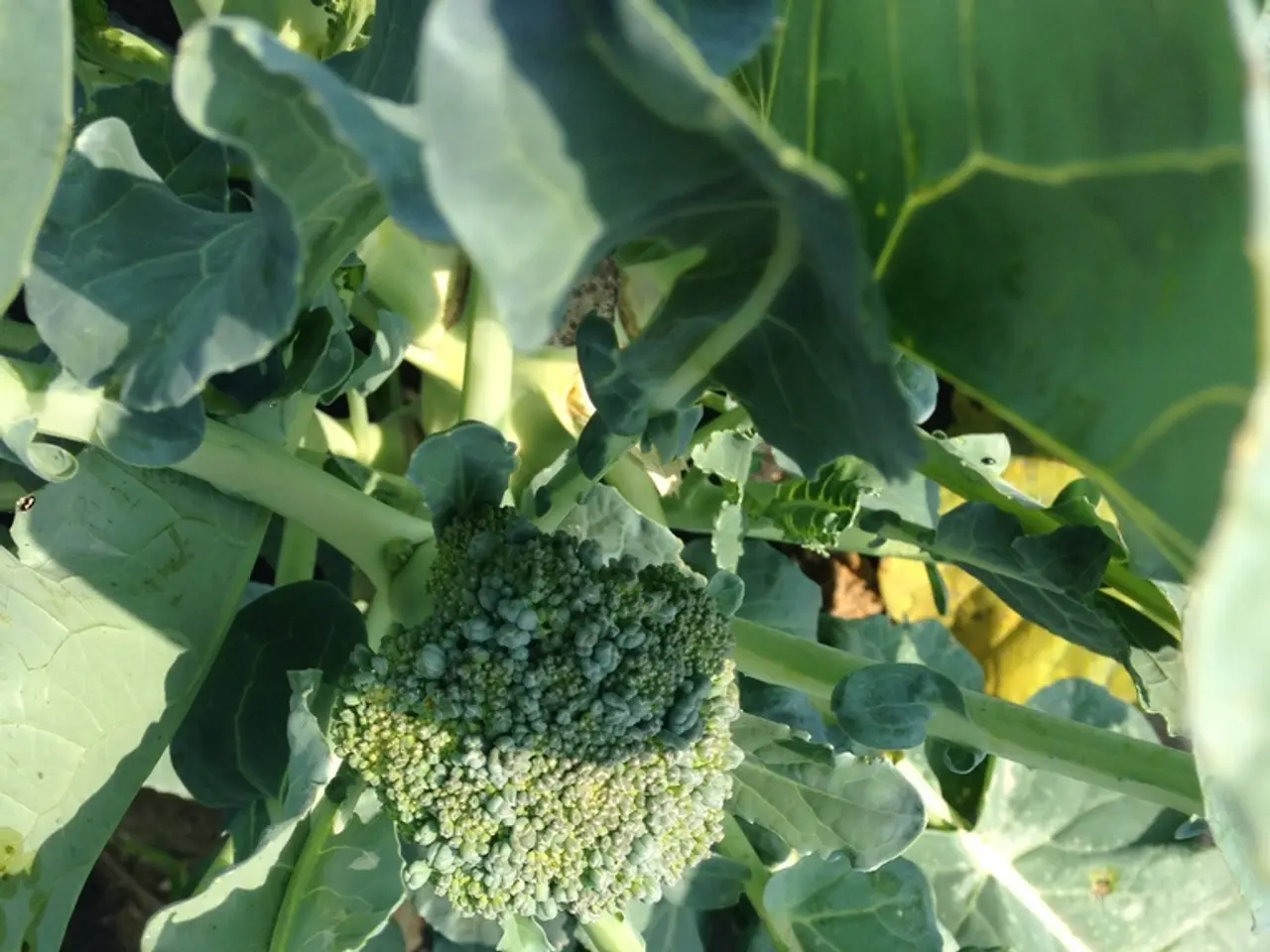Guidelines for UK Gardeners: An All-Encompassing Tutorial on Nurturing Homegrown Broccoli
Growing Broccoli at Home in the British Climate
In the heart of the UK, home gardening is a popular pastime, and one vegetable that offers numerous advantages is broccoli. This nutritional powerhouse is not only delicious but also provides economic benefits and environmental advantages. In this article, we'll explore how to grow broccoli successfully in the British climate.
Timing and Sowing
The growing season for broccoli varies across the country due to diverse regional climates. However, for most UK gardeners, sowing seeds in July for an autumn or winter crop is ideal. Plant the seeds about 1 cm deep and space them 30 cm apart to allow room for growth. You can either opt for direct sowing into the soil or start seedlings indoors and transplant them later.
Site Selection
Choose a location with full sun to ensure strong growth. The soil should be well-drained, fertile, and kept consistently moist but not waterlogged. Incorporating extra organic matter and grit into the soil helps prevent waterlogging in particularly wet areas.
Watering and Care
Keep the soil moist as seedlings develop, but once broccoli crowns (heads) begin forming, avoid wetting the crowns directly—water the soil only to prevent disease. Using a mulch to retain moisture and suppress weeds can be beneficial.
Protection
Young plants may be vulnerable to pests like cabbage white butterflies. Using floating row covers can provide protection. Maintain good airflow around plants to reduce fungal diseases. In cold regions, providing windbreaks can prevent cold damage from biting easterly winds.
Growth and Harvest
Most broccoli varieties mature in about 80-90 days after sowing. Harvest the main central head first; afterwards, many varieties produce smaller side shoots that can be harvested over time. Keep the harvest tight and regular to encourage further side shoot growth.
Additional Tips
Broccoli prefers cooler temperatures, so starting in July leverages the warm summer to establish plants before cooler weather sets in. Keeping crowns dry once heads start to appear helps prevent rot. Rotate broccoli with other non-brassica crops annually to reduce disease risk.
Varieties and Succession Planting
Calabrese (Green Sprouting), Purple Sprouting Broccoli, Romanesco, Tenderstem (Broccolini) are varieties that perform well in UK growing conditions. Succession planting, sowing small batches every 2-3 weeks during the appropriate season, provides insurance against weather-related failures and ensures a continuous harvest rather than a single glut.
Storage and Preservation
Proper storage techniques include placing unwashed heads in a perforated plastic bag and storing them in the fridge crisper drawer at around 0°C to 4°C. When you have a periodic glut of produce, consider preserving through pickling or making broccoli soup for freezing.
Organic Pest Management and Soil Preparation
Organic pest control methods should be applied if needed. A balanced organic fertiliser should be used, with a nitrogen-rich feed for spring-planted broccoli and a balanced feed in early spring for overwintering varieties. Growing your own broccoli offers numerous advantages, including nutritional powerhouse, economic benefits, and environmental advantages.
Conclusion
Growing broccoli at home connects the gardener to the seasons and creates a deeper appreciation for natural cycles influencing food production. By following these step-by-step guidelines, you can enjoy the satisfaction of serving home-grown broccoli at your table, knowing its flavour, freshness, and nutritional value far exceed anything available in shops. Happy gardening!
Read also:
- Reduced Scope 1 emissions of Airbus due to the use of Sustainable Aviation Fuel
- Unveiling of Advanced Ochre Tools Uncovers Complicated Early Human Craftsmanship
- Financial Management Operations (FMO) spearheads a €130 million syndicated loan for QNB Leasing, a Turkish financial institution.
- At the age of 75, finding life monotonous, she decided to take on a new role as a foster mother.







